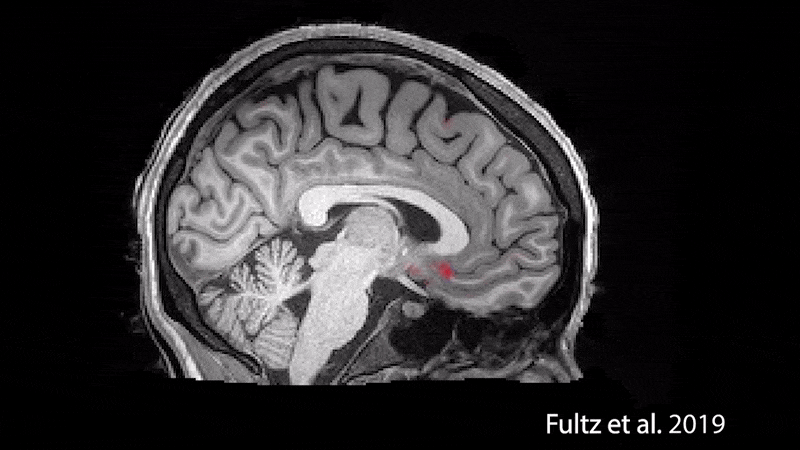Watch Spinal Fluid 'Wash' the Sleeping Brain in Rhythmic, Pulsing Waves

What happens to your brain as you sleep? A new video holds the answer: A juicy mix of blood and cerebrospinal fluid slosh through your smushy noggin in a rhythmic pulsating dance.
The movement appears almost tidal in a video released Oct. 31 along with an article in the journal Science. Though researchers knew that brain activity takes on a rhythmic pattern during sleep, this video and study mark the first time anyone has observed a similarly rhythmic flow of cerebrospinal fluid.
"We've known for a while that there are these electrical waves of activity in the neurons," study co-author Laura Lewis, a professor of biomedical engineering at Boston University, said in a statement. "But before now, we didn't realize that there are actually waves in the CSF, too."
Related: See 3D Images of the Human Brain
Cerebrospinal fluid is a clear fluid that surrounds and cushions the brain and spinal cord. It circulates in the meninges, or the casing, that surrounds the brain. Research has suggested that one of the jobs of cerebrospinal fluid is to cleanse the brain of toxic proteins during sleep. The new video might show the CSF doing just that.
Lewis and her colleagues captured images of sleeping brains by having 13 research participants, all in their 20s and 30s, fall asleep in a magnetic resonance imaging (MRI) machine. The participants, who were paid for this uncomfortable arrangement, also had to wear a net of electrodes on their scalps to measure the electrical activity of their brains.
The results showed a pulsing, predictable flow. First, neural activity quiets. Then, blood flows out of the brain. Next, cerebrospinal fluid flows in. Lather, rinse, repeat. The pattern is so consistent that it's possible to just look at cerebrospinal fluid in a given brain region and tell whether a person is awake or asleep, Lewis said.
Sign up for the Live Science daily newsletter now
Get the world’s most fascinating discoveries delivered straight to your inbox.
The findings may be a new insight into brain-related problems of aging. Toxic proteins are implicated in Alzheimer's disease and other dementias. These dementias are often associated with disrupted sleep, and atypical sleep patterns might be linked to a greater risk of developing dementia. Both slow-wave sleep — a phase of deep sleep during which dreaming occurs — and cerebrospinal fluid have been associated with the cleansing of the brain. The new research suggests that the brain activity and the fluid flow are linked.
It's not yet clear exactly how or why the neural activity, blood flow and cerebrospinal fluid remain so in sync. Lewis and her colleagues speculate that when brain activity drops, the neurons need less oxygenation, so blood flow declines. The cerebrospinal fluid might then rush in to maintain pressure in the brain and prevent brain damage. That's only speculation, though, Lewis said. More studies of the brain's nocturnal cadences are needed to understand the cleansing flow.
- Inside the Brain: A Photo Journey Through Time
- 6 Big Mysteries of Alzheimer's Disease
- 10 Discoveries About the Human Brain
Originally published on Live Science.


Stephanie Pappas is a contributing writer for Live Science, covering topics ranging from geoscience to archaeology to the human brain and behavior. She was previously a senior writer for Live Science but is now a freelancer based in Denver, Colorado, and regularly contributes to Scientific American and The Monitor, the monthly magazine of the American Psychological Association. Stephanie received a bachelor's degree in psychology from the University of South Carolina and a graduate certificate in science communication from the University of California, Santa Cruz.










